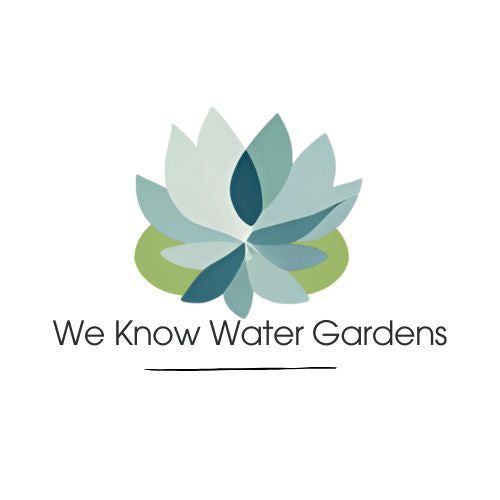Home
>
We Know Water Gardens Blog
>
Spring into Action: Essential Steps for Preparing Your Pond in Australia
Spring into Action: Essential Steps for Preparing Your Pond in Australia
on Aug 25, 2023

As the days get longer and the weather begins to warm up, it's time to spring into action and prepare your pond for the upcoming season. Whether you have a small backyard pond or a larger water feature, taking a few essential steps now can ensure that your pond remains healthy and vibrant throughout the spring and beyond. In Australia, with its unique climate and diverse ecosystems, it's even more crucial to give your pond the attention it deserves.
From cleaning out debris to testing water quality and maintaining a balanced ecosystem, this guide will provide you with all the necessary steps to keep your pond in top shape. So grab your gardening gloves and let's dive into the essential preparations needed to create a stunning aquatic oasis right in your own backyard. Get ready to welcome the season with a pond that's bursting with life and beauty.
Why is spring the ideal time for pond preparation?
 Spring is the ideal time to prepare your pond for several reasons. Firstly, as the weather warms up, the pond's inhabitants become more active and require a clean and healthy environment. Secondly, spring is the season of growth, making it the perfect time to introduce new plants and fish to your pond. Finally, by preparing your pond in spring, you can prevent issues that may arise during the summer months, such as algae blooms and imbalanced water chemistry. Taking the time to prepare your pond now will set the stage for a beautiful and thriving aquatic ecosystem throughout the year.
Spring is the ideal time to prepare your pond for several reasons. Firstly, as the weather warms up, the pond's inhabitants become more active and require a clean and healthy environment. Secondly, spring is the season of growth, making it the perfect time to introduce new plants and fish to your pond. Finally, by preparing your pond in spring, you can prevent issues that may arise during the summer months, such as algae blooms and imbalanced water chemistry. Taking the time to prepare your pond now will set the stage for a beautiful and thriving aquatic ecosystem throughout the year.
When preparing your pond in spring, the first step is to assess the condition of your pond. This involves inspecting the overall health of the pond, checking for any signs of damage or deterioration, and identifying areas that require attention. Look for any cracks or leaks in the pond liner, loose rocks or stones, and signs of erosion around the pond edges. Assessing the condition of your pond will help you determine the extent of the work needed and guide your preparations moving forward.
Cleaning and clearing debris from the pond
 Once you have assessed the condition of your pond, it's time to roll up your sleeves and start cleaning. Begin by removing any debris that has accumulated over the winter months. This includes fallen leaves, twigs, and other organic matter that can decompose and negatively impact water quality. Use a skimmer net or a pond vacuum to remove surface debris and bottom sludge. Be thorough in your cleaning efforts, ensuring that no debris is left behind. Cleaning the pond not only improves the aesthetic appeal but also prevents the buildup of harmful substances that can harm aquatic life.
Once you have assessed the condition of your pond, it's time to roll up your sleeves and start cleaning. Begin by removing any debris that has accumulated over the winter months. This includes fallen leaves, twigs, and other organic matter that can decompose and negatively impact water quality. Use a skimmer net or a pond vacuum to remove surface debris and bottom sludge. Be thorough in your cleaning efforts, ensuring that no debris is left behind. Cleaning the pond not only improves the aesthetic appeal but also prevents the buildup of harmful substances that can harm aquatic life.
In addition to cleaning the pond, it's essential to clear out any overgrown vegetation that may have encroached on the pond's edges. Trim back any overhanging branches or plants that may shade the pond, as excessive shade can lead to poor water quality and hinder the growth of beneficial aquatic plants. By removing excess vegetation, you allow more sunlight to reach the pond, promoting a healthy and balanced ecosystem. Any of your pruning's can be added safely to your green waste bin or compost heap.
Ensure you apply API's Pond Accu Clear to the pond during this process. This will bind together particles that cause murky water and allow them to settle on the bottom of your pond. They can then be vacuumed up with your pond vacuum.
Checking and repairing pond equipment
Another crucial step in preparing your pond is to check and repair any equipment that is essential for its proper functioning. Inspect your pond pump, filter, and UV clarifier to ensure they are in good working condition. Clean or replace any sponge prefilters, clogged filters and check for any leaks or damage in the plumbing. If you notice any issues with your equipment, address them promptly to prevent further damage or disruptions to the pond's ecosystem.
While checking your equipment, don't forget to inspect and clean your pond's lighting system. Remove any debris or algae that may have accumulated on the lights, as this can affect their performance and diminish the visual appeal of your pond at night. A well-maintained lighting system can enhance the beauty of your pond and create a stunning focal point in your outdoor space.
Testing and adjusting water parameters
Maintaining proper water quality is crucial for the health and well-being of your pond's inhabitants. In spring, it's essential to test and adjust the water parameters to ensure they are within the optimal range. Test the pH, ammonia, nitrite, and nitrate levels using a reliable water testing kit. Adjust the pH if necessary by adding products specifically designed to raise or lower it. If you detect high levels of ammonia or nitrite, consider adding beneficial bacteria to help break down these harmful substances. Regularly monitoring and adjusting the water parameters will create a stable and healthy environment for your fish and plants.
Apart from testing water chemistry, it's also important to check the temperature of the water. Spring brings fluctuating temperatures, which can affect the metabolism and behavior of fish. Use a pond thermometer to monitor the water temperature and make adjustments as needed. If the water is too cold, consider using a pond heater to maintain a consistent temperature for your fish or wait until later in the season.
Adding beneficial bacteria and pond treatments
To maintain a balanced ecosystem, it's beneficial to introduce beneficial bacteria to your pond. These bacteria help break down organic waste, such as fish waste and decaying plant matter, preventing the buildup of harmful substances. There are various types of beneficial bacteria products available, including liquid and granular forms. Follow the product instructions for the correct dosage and frequency of application. Adding beneficial bacteria regularly will help keep your pond clean and clear, promoting the overall health of the ecosystem.
In addition to beneficial bacteria, consider using pond treatments to address specific issues. For example, if you notice excessive algae growth, you can use algaecides to control and prevent further blooms. However, it's important to use these treatments judiciously and follow the manufacturer's instructions carefully. Overuse of chemicals can harm the pond's inhabitants and disrupt the natural balance of the ecosystem. Always opt for environmentally friendly and pond-safe products when choosing treatments for your pond.
Introducing or reintroducing aquatic plants and fish
 Now that your pond is clean, the water parameters are balanced, and the ecosystem is primed for growth, it's time to introduce or reintroduce aquatic plants and fish to your pond. Aquatic plants not only add beauty and visual interest but also play a crucial role in maintaining water quality. They absorb excess nutrients, provide shade, and offer hiding spots for fish. Choose a variety of plants, including submerged, floating, and marginal plants, to create a diverse and balanced ecosystem. Check out the spring range of flowering pond plants, ready to be shipped to most Australian states.
Now that your pond is clean, the water parameters are balanced, and the ecosystem is primed for growth, it's time to introduce or reintroduce aquatic plants and fish to your pond. Aquatic plants not only add beauty and visual interest but also play a crucial role in maintaining water quality. They absorb excess nutrients, provide shade, and offer hiding spots for fish. Choose a variety of plants, including submerged, floating, and marginal plants, to create a diverse and balanced ecosystem. Check out the spring range of flowering pond plants, ready to be shipped to most Australian states.
When adding fish to your pond, consider the size and capacity of your pond. Avoid overcrowding, as it can lead to poor water quality and stress among the fish. Research the specific requirements of the fish species you plan to introduce, including their temperature and water quality preferences. Introduce the fish slowly to allow them to acclimate to their new environment. Keep a close eye on their behavior and health, and make adjustments as needed to ensure their well-being.
Implementing a maintenance schedule for the pond
Maintaining a beautiful and thriving pond requires regular maintenance. Once your pond is prepared for spring, it's essential to implement a maintenance schedule to keep it in top shape throughout the year. This schedule should include routine tasks such as regular cleaning, testing water parameters, and inspecting and servicing equipment. Set aside dedicated time each week or month to perform these tasks and make any necessary adjustments. Consistent and proactive maintenance will prevent issues from escalating and ensure that your pond remains a healthy and enjoyable feature in your backyard.
Enjoying a beautiful and thriving pond in spring
As spring arrives in Australia, it's time to take action and prepare your pond for the upcoming season. By following the essential steps outlined in this guide, you can ensure that your pond remains healthy, vibrant, and bursting with life throughout the year. From cleaning and clearing debris to testing water quality, introducing beneficial bacteria, and maintaining a balanced ecosystem, each step plays a crucial role in creating a stunning aquatic oasis. So grab your gardening gloves, roll up your sleeves, and embark on the journey of preparing your pond for spring. With proper care and attention, you can enjoy a beautiful and thriving pond that brings joy and tranquility to your outdoor space. Spring into action and give your pond the love it deserves!
© weknowwatergardens 2023
Share

